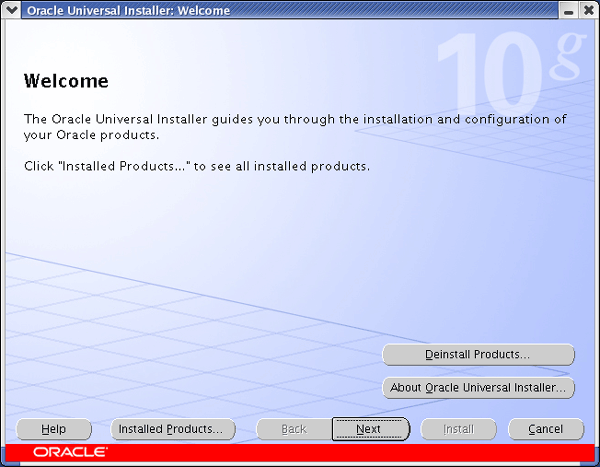
Oracle Installation
Oracle is very simple to install, it can be installed on a number of different operating systems. Basically when on installing on to a Unix server a number of pre-install steps must be taken before you install Oracle.
The minimum disk and memory requirements are 1.5-2GB of disk space and at least 256MB RAM, however for more serious applications you would need a lot more than this (8GB - 32GB are not uncommon).
As with any software you should consult the documentation for best practices and to get the best performance out of the software, Oracle is no different in that a good installation plan is required before you attempt to install and configure Oracle, however i will not explain how to do this, it would be best left to the Oracle documentation, which i highly recommend you read, especially the installation documentation and with each different Oracle version different settings are required.
What i will attempt to cover is how to install Oracle on a very basic system using mostly the default setting which is ideal if you are just starting out as a junior Oracle DBA, i will not explain how to setup Windows or VMware there is plenty of documentation on the web.
Oracle Flexible Architecture
Oracle recommends a disk layout methodology which is called the Oracle Flexible Architecture (OFA), it helps to layout the directory structure so that multiple versions of oracle can run in harmony and to define a standard so that Oracle support can help more efficiently. These are only recommendations and you do not have to follow them, however the OFA was designed to minimize disk contention, to set a standard layout and to improve overall database performance.
OFA Compliant directory structure
| Directory Format | Description | ||||||||||||||||||||||||||||||
|
|||||||||||||||||||||||||||||||
The directories are normally owned by oracle and grouped by dba, however this is not a standard.
Unix Pre-Installation
When installing on to a Unix platform you should check the following before installing Oracle, again all this information can be obtained by reading the Oracle installation guide
Oracle Installation
Once you have the software installed you start the installation process by running the executable runInstaller, at this point a GUI interface (see below) should start.
On the welcome screen I selected next

Here you select a path name, as I was using windows i selected "c:\oracle"
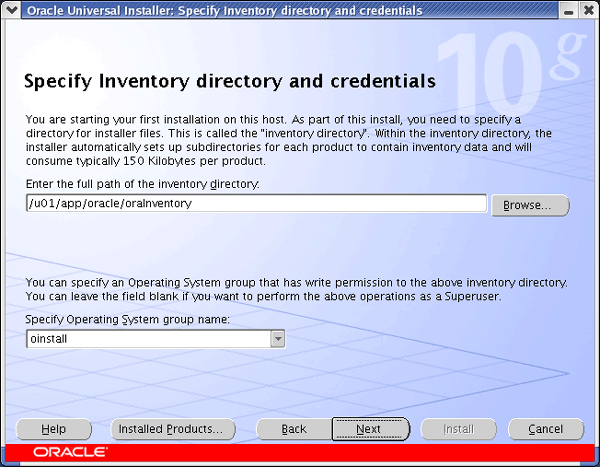
Again select pathname
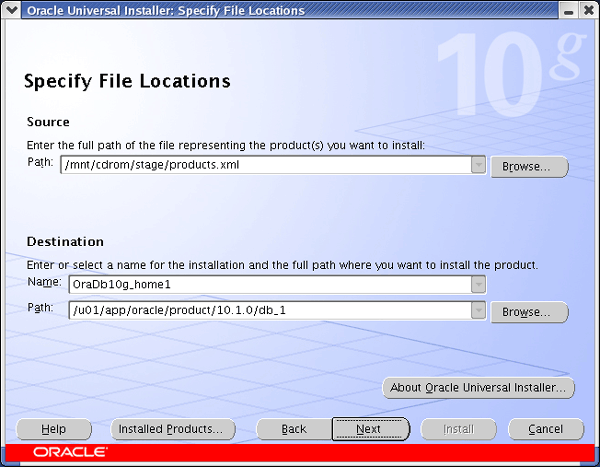
I selected the enterprise edition

Hopefully you should not get any errors here, if you do you need to fix them
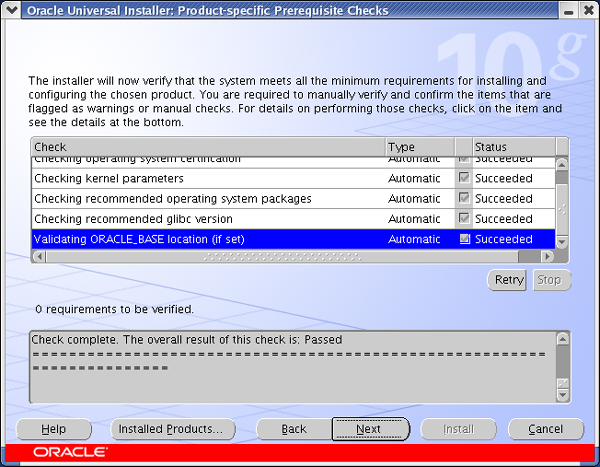
I selected a general database here, this will be enough to get me going
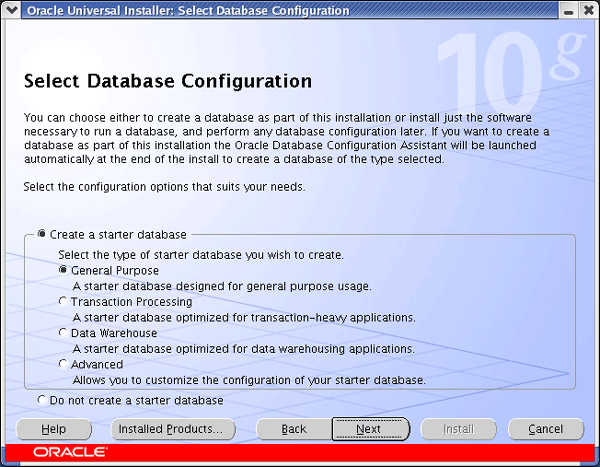
This is were you specify the database name,I choose D01 (my development database) but you can name it what ever you like, also don't forget to select the create database with sample schemas
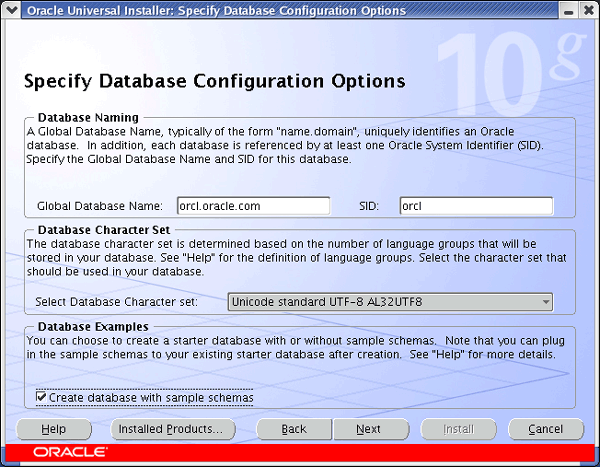
This part is configuring the OEM, make sure you select the use Database Control for Database Management ( you need to play around with OEM for the exams)

Again select the path name, as i was using windows i choose c:\oracle

I did not select this as i wanted to manually configure this later on as it gives me some practice.

Select a password
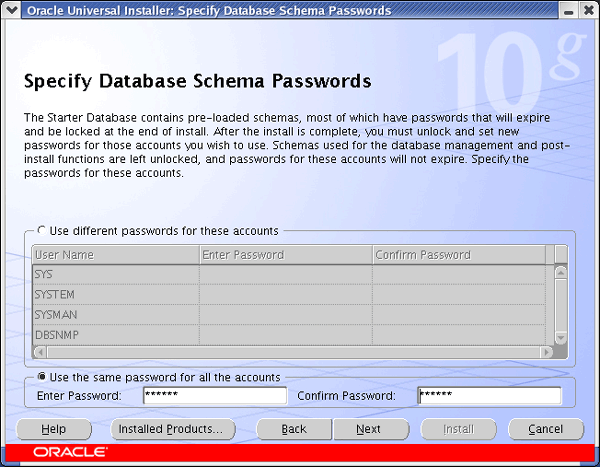
Now you get the summary screen you can change disk locations before you start the install
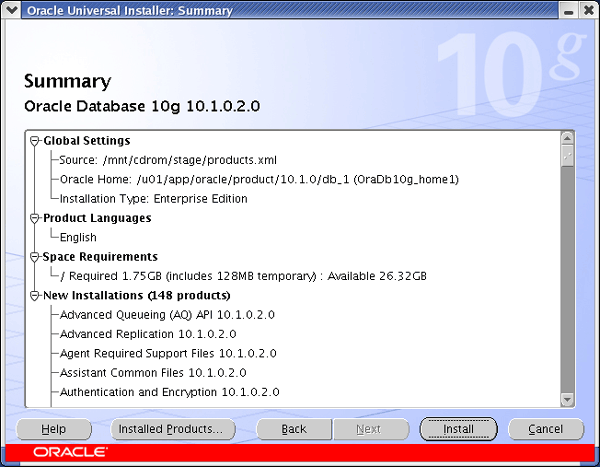
At this point the installation starts and theres no going back.
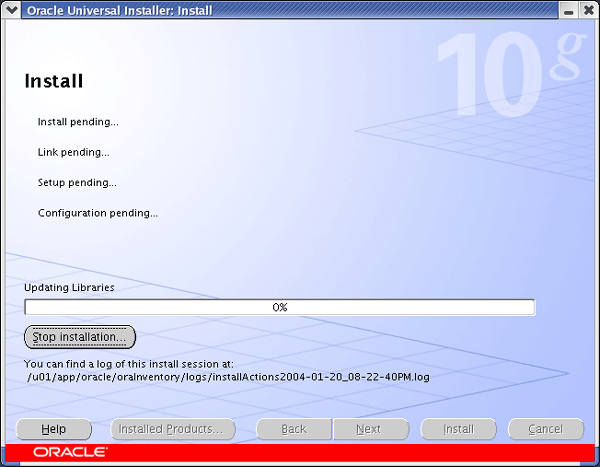
The installation continues with configuring the Listener, etc

Now it begins the "create database" part and setups a example tablespace if you cose to do so
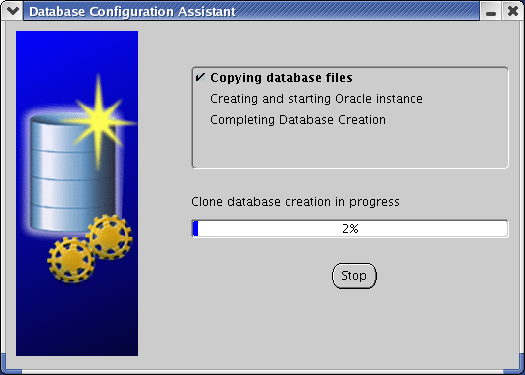
Make a note of the OEM location, this will allow to to access the database via OEM

The installation is now finished, Enjoy!!!!!!
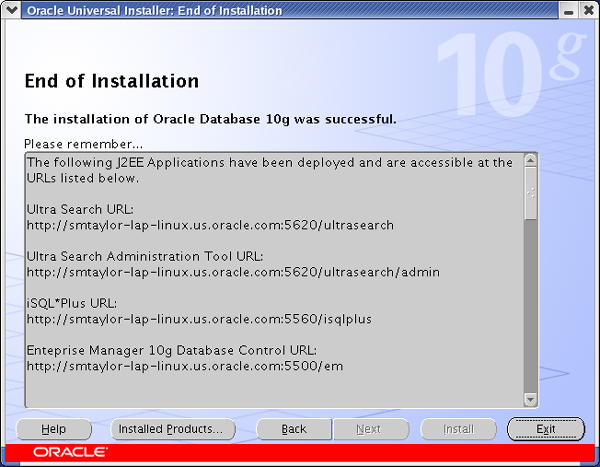
OEM Manual Installation
Some more advanced DBA's like to create the database by hand, which involves a number of steps which includes setup up the OEM by hand, see OEM for more details.